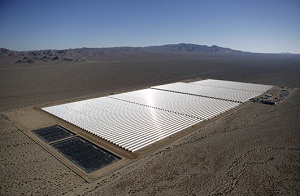PV could provide world’s energy needs with minimal impact finds WWF report
 A recent report from the World Wildlife Federation (the real WWF) found that solar, photovoltaics (PVs) could power all the world’s energy needs with minimal impact to the land. As an environmental organization chartered to protect animals and nature from too much human intrusion, the report should be another significant voice to help promote the spread of solar and renewable energy worldwide.
A recent report from the World Wildlife Federation (the real WWF) found that solar, photovoltaics (PVs) could power all the world’s energy needs with minimal impact to the land. As an environmental organization chartered to protect animals and nature from too much human intrusion, the report should be another significant voice to help promote the spread of solar and renewable energy worldwide.
The report “Solar PV Atlas: solar power in harmony with nature” was released Jan. 16 at the World Future Energy Summit in Abu Dhabi, in the United Arab Emirates. “The report illustrates that PV technology, when well planned, does not conflict with conservation goals and clarifies that no country or region must choose between solar PV and space for humans and nature,” WWF said in a release.
Furthermore, WWF is actively working to promote renewable energy, particularly solar, and wants to transition the world to 100 percent renewable energy by mid-century. “We are actively promoting investments and measures in Renewable Energy technologies that help to make this happen,” said Jean-Philippe Denruyter, WWF’s manager of Global Renewable Energy Policy.
“As climate change increasingly threatens people and the natural world, it is more important than ever to work for the rapid and wide-scale adoption of well sited, responsibly operated renewable energy power facilities. Environmental protection and renewable energy can and are developing in parallel,” said Samantha Smith, leader of the WWF’s Global Climate & Energy Initiative.
Solar PV Atlas was developed by WWF, First Solar, 3TIER and Fresh Generation. to develop the report. It showed that if all electricity was generated through renewable energy (RE) sources—even just with PV—it would only need an insignificant amount of world’s available land mass.
The report evaluated seven instances that covered six countries and one region, among them Indonesia, Madagascar, Mexico, Morocco, South Africa, Turkey, and the Indian state of Madhya Pradesh. In each case it found that all the electricity needed in the region could be produced on less than 1 percent of the area’s total land mass. The report evaluated the anticipated electric load by 2050 for each case, according to WWF.
The regions were chosen because they represented diverse geographies, demographics, natural environments, economies and political structures, WWF said. The organization also said that each region or country studied good average levels of sunshine, and have potential for widespread adoption of PV.



